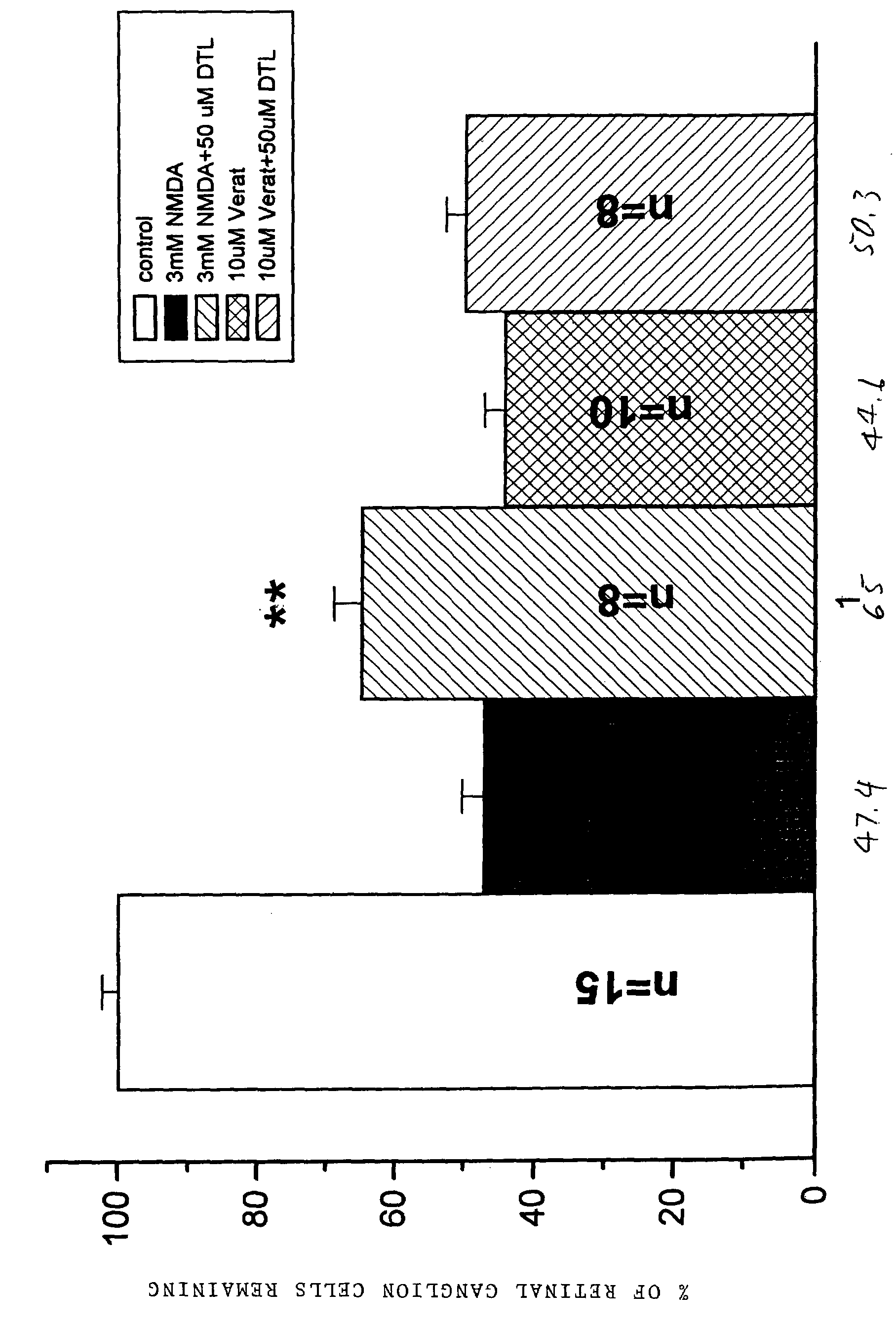Methods of using ryanodine antagonists in treating neural injury
a neural injury and ryanodine technology, applied in the field of neurology and ophthalmology, can solve the problems of neuronal death, unmet need for neuroprotective agents, and the underlying causes of glaucoma are still not well understood, and achieve the effect of preventing or ameliorating damage to cns neurons
- Summary
- Abstract
- Description
- Claims
- Application Information
AI Technical Summary
Benefits of technology
Problems solved by technology
Method used
Image
Examples
example 1
Experimental Procedure for Measuring Neural Protection in Rabbit Model
[0039]To evaluate in vivo neuroprotective effects of dantrolene (DTL) on NMDA-induced injury of RGCs an imaging method to count cell numbers at the RGC layer in the isolated retinas was developed. Briefly, two weeks following intravitreal injection of vehicle or various test agents, a rabbit was euthanized and the treated eye was enucleated. A piece of retina (8 mm in diameter) was cut immediately below the optic nerve head, flat-mounted in a plastic chamber filled with HEPES-buffered Ames medium, and imaged at 25 fields in a 5×5 array with a 40× water immersion objective using an Olympus microscope (BX50WI) equipped with an epi-fluorescence unit. The images were taken with a Hamamatsu C4742-95 digital camera and Image-Pro Plus software (V4.5). The total number of neurons at the ganglion cell layer in these 25 fields was counted. The same measurements were conducted in one control group (rabbits treated with vehic...
example 2
Assay for Selecting Ryanodine Antagonists Other Than Dantrolene
[0041]Assays for determining ryanodine antagonist may be conducted following procedures modified from that described by Laver et al., (J. Physiol. 537:763-778, 2001). Briefly, purified ryanodine receptor-channel complexes are incorporated into planar phospholipid bilayers with resting calcium gradient similar to that in a normal neuron at rest (100 nM cytoplasmic and 1 mM luminal). The level of channel activation can be determined in the presence of various ligands that activate ryanodine receptors. Effective antagonistic action of the compounds to be selected can be determined by a reduction of agonist-induced activation of the channel. The specificity of the antagonists can be determined by commercially available standard screens, such as NovaScreens.
PUM
| Property | Measurement | Unit |
|---|---|---|
| diameter | aaaaa | aaaaa |
| calcium permeability | aaaaa | aaaaa |
| permeability | aaaaa | aaaaa |
Abstract
Description
Claims
Application Information
 Login to View More
Login to View More - R&D
- Intellectual Property
- Life Sciences
- Materials
- Tech Scout
- Unparalleled Data Quality
- Higher Quality Content
- 60% Fewer Hallucinations
Browse by: Latest US Patents, China's latest patents, Technical Efficacy Thesaurus, Application Domain, Technology Topic, Popular Technical Reports.
© 2025 PatSnap. All rights reserved.Legal|Privacy policy|Modern Slavery Act Transparency Statement|Sitemap|About US| Contact US: help@patsnap.com


